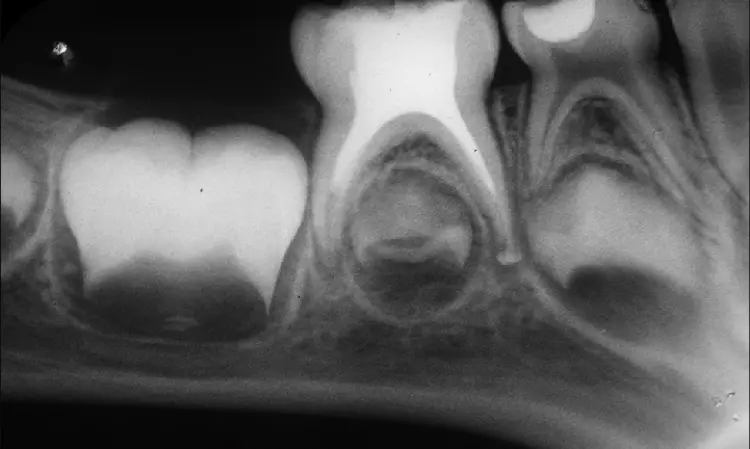- Home
- Medical news & Guidelines
- Anesthesiology
- Cardiology and CTVS
- Critical Care
- Dentistry
- Dermatology
- Diabetes and Endocrinology
- ENT
- Gastroenterology
- Medicine
- Nephrology
- Neurology
- Obstretics-Gynaecology
- Oncology
- Ophthalmology
- Orthopaedics
- Pediatrics-Neonatology
- Psychiatry
- Pulmonology
- Radiology
- Surgery
- Urology
- Laboratory Medicine
- Diet
- Nursing
- Paramedical
- Physiotherapy
- Health news
- Fact Check
- Bone Health Fact Check
- Brain Health Fact Check
- Cancer Related Fact Check
- Child Care Fact Check
- Dental and oral health fact check
- Diabetes and metabolic health fact check
- Diet and Nutrition Fact Check
- Eye and ENT Care Fact Check
- Fitness fact check
- Gut health fact check
- Heart health fact check
- Kidney health fact check
- Medical education fact check
- Men's health fact check
- Respiratory fact check
- Skin and hair care fact check
- Vaccine and Immunization fact check
- Women's health fact check
- AYUSH
- State News
- Andaman and Nicobar Islands
- Andhra Pradesh
- Arunachal Pradesh
- Assam
- Bihar
- Chandigarh
- Chattisgarh
- Dadra and Nagar Haveli
- Daman and Diu
- Delhi
- Goa
- Gujarat
- Haryana
- Himachal Pradesh
- Jammu & Kashmir
- Jharkhand
- Karnataka
- Kerala
- Ladakh
- Lakshadweep
- Madhya Pradesh
- Maharashtra
- Manipur
- Meghalaya
- Mizoram
- Nagaland
- Odisha
- Puducherry
- Punjab
- Rajasthan
- Sikkim
- Tamil Nadu
- Telangana
- Tripura
- Uttar Pradesh
- Uttrakhand
- West Bengal
- Medical Education
- Industry
Cone-beam computed tomography superior to periapical radiography for detection of vertical root fractures: Study

A new study published in the journal BMC Medical Imaging showed that Cone-beam computed tomography (CBCT) had a greater sensitivity than periapical radiography (PA) in diagnosing vertical root fractures (VRF). An entire or partial root surface may be affected by a vertical root fracture, which is characterized as a longitudinal fracture in the root that starts in the root canal and continues towards the apical periodontium. Tooth extraction is sometimes the only treatment option for fractured teeth, which has a poor or disastrous prognosis.
Accurate VRF identification is crucial to avoid incorrect diagnosis and the extraction of a tooth that might be treated and kept. The most common diagnostic techniques for identifying VRFs include radiography, clinical examination, and invasive procedures like exploratory surgery. It is controversial to use two-dimensional radiography techniques to detect VRFs. In contrast to PA radiography, CBCT is three-dimensional. Recent research has shown that improved understanding of VRF detection, together with the introduction of more sophisticated CBCT scanners and software, has increased diagnostic accuracy. In order to compile the existing data comparing the diagnostic accuracy of PA and CBCT for the diagnosis of vertical root fractures, Abbas Shokri and team carried out this study to do a systematic review and meta-analysis.
A search for published literature about all kinds of human teeth was done using PubMed, Scopus, and Web of Science. The Comprehensive Meta-Analysis statistical software V3 was used to examine the data. The heterogeneity of the studies were examined using the I2 statistic. The requirements for inclusion in the systematic review and meta-analysis were fulfilled by 23 and 16 papers, respectively. For PA radiography, the sensitivity and specificity for VRF detection were determined to be 0.51 and 0.87, respectively, whereas for CBCT, they were 0.70 and 0.84, respectively.
Although CBCT offers benefits like high-resolution 3D images and avoids the drawbacks of traditional radiography modalities like superimposing anatomical structures, it should be remembered that CBCT still carries a higher radiation dose and should not be used as a first radiography technique until after a thorough clinical examination to look for any signs of a fracture line. According to the current findings, CBCT generally had a much greater overall sensitivity than PA radiography for the identification of VRFs; however, there was no discernible difference in the two methods' specificity.
Source:
Shokri, A., Salemi, F., Taherpour, T., Karkehabadi, H., Ramezani, K., Zahedi, F., & Farhadian, M. (2024). Is cone-beam computed tomography more accurate than periapical radiography for detection of vertical root fractures? A systematic review and meta-analysis. In BMC Medical Imaging (Vol. 24, Issue 1). Springer Science and Business Media LLC. https://doi.org/10.1186/s12880-024-01472-5
Neuroscience Masters graduate
Jacinthlyn Sylvia, a Neuroscience Master's graduate from Chennai has worked extensively in deciphering the neurobiology of cognition and motor control in aging. She also has spread-out exposure to Neurosurgery from her Bachelor’s. She is currently involved in active Neuro-Oncology research. She is an upcoming neuroscientist with a fiery passion for writing. Her news cover at Medical Dialogues feature recent discoveries and updates from the healthcare and biomedical research fields. She can be reached at editorial@medicaldialogues.in
Dr Kamal Kant Kohli-MBBS, DTCD- a chest specialist with more than 30 years of practice and a flair for writing clinical articles, Dr Kamal Kant Kohli joined Medical Dialogues as a Chief Editor of Medical News. Besides writing articles, as an editor, he proofreads and verifies all the medical content published on Medical Dialogues including those coming from journals, studies,medical conferences,guidelines etc. Email: drkohli@medicaldialogues.in. Contact no. 011-43720751


